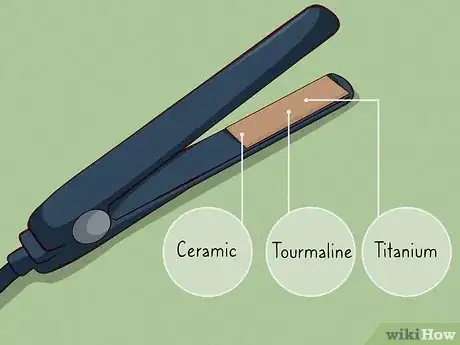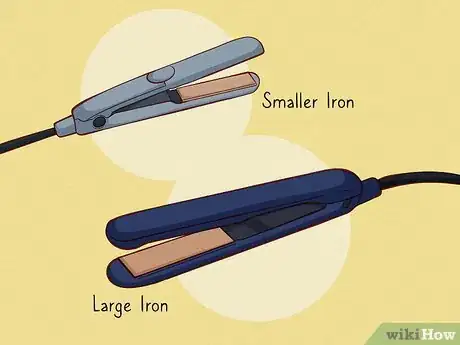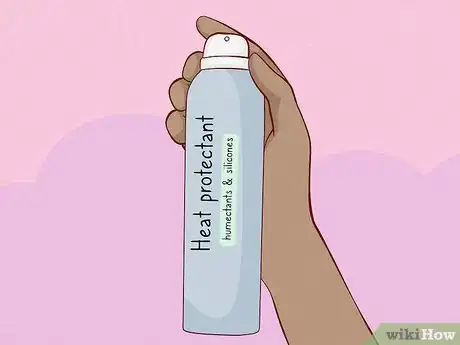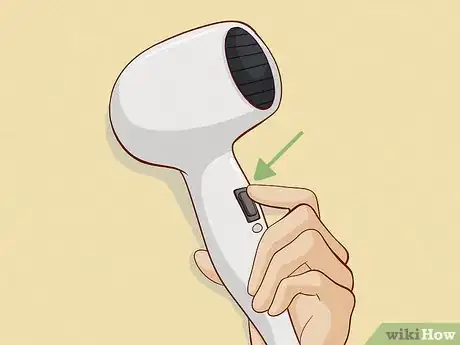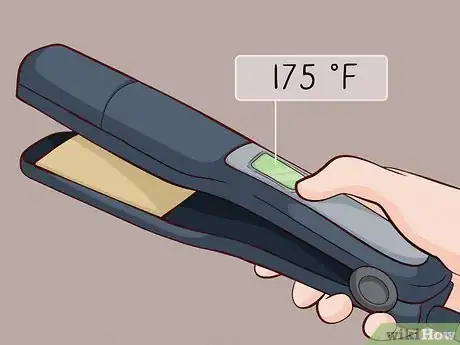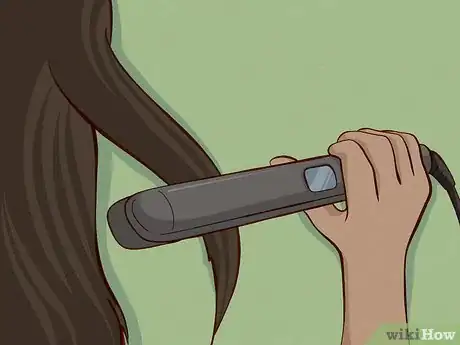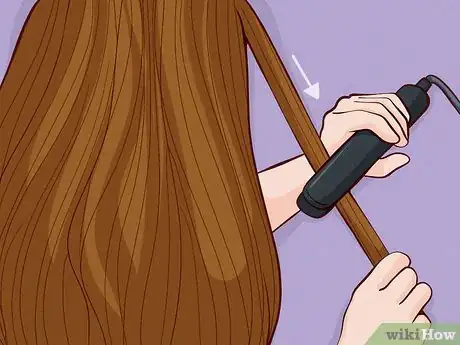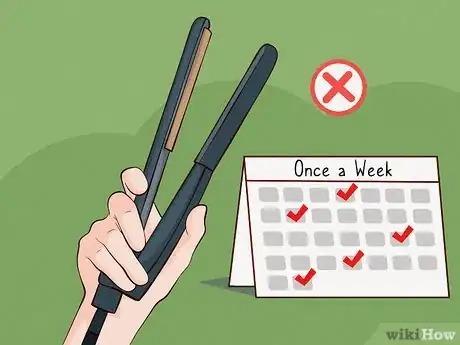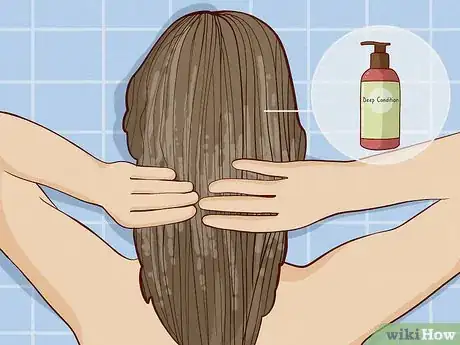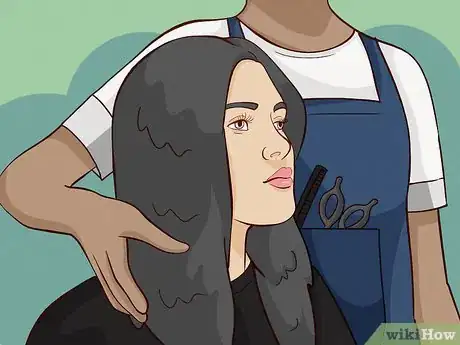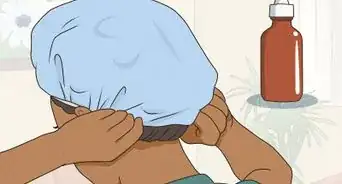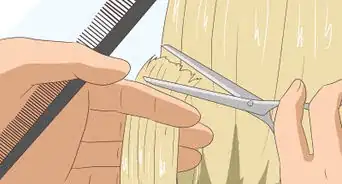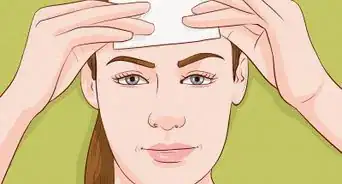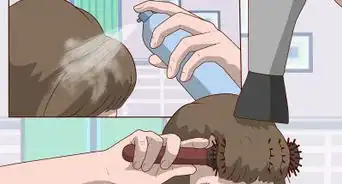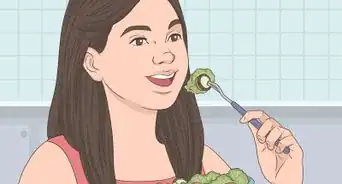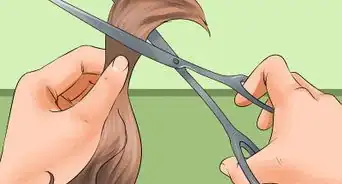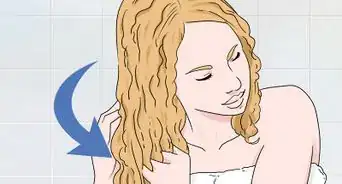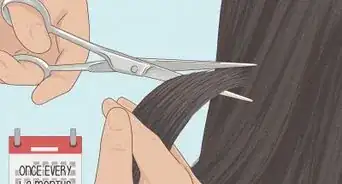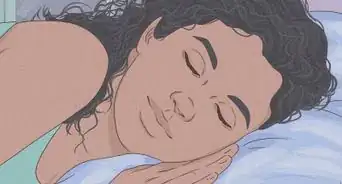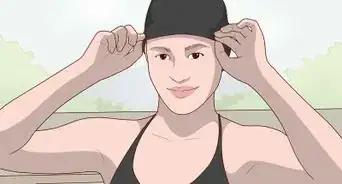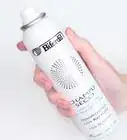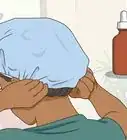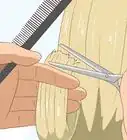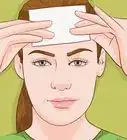This article was co-authored by Gina Almona. Gina Almona is the Owner of Blo It Out, a New York City-based hair salon. With over 20 years of beauty training experience, Gina's work has been featured in People Magazine, Time Out New York, and Queens Scene. She has been able to keep a fresh perspective in the industry by demonstrating and participating in trade shows and workshops like the International Beauty Show. She received her cosmetology training from the Long Island Beauty School, Astoria.
This article has been viewed 61,122 times.
Using heat on your hair is a great way to get it to take the shape you want. Unfortunately, blow-drying, flat ironing, and curling can all wreak havoc on your hair, unless you take some steps to do it right.[1] By heat styling your hair correctly and taking some additional steps to keep your hair healthy, you can achieve the style you want with minimal damage to your hair.
Steps
Heat Styling Your Hair
-
1Choose a high-quality straightening or curling iron. The material your iron is made of can have a major effect on your hair. Inexpensive irons are often made with metals that fail to heat evenly. These irons can actually burn your hair.[2] Select a higher-quality straightening or curling iron made from one of the following materials:
- Ceramic
- Tourmaline
- Titanium
-
2Select the right size iron for your hair to help minimize damage. In general, a 1 inch (2.5 cm) iron is the most versatile choice for hair of medium length and thickness.[3]
- If your hair is short, choose a smaller iron.
- If your hair is very thick or long, opt for a larger iron. This will also speed up the time it takes you to straighten your hair.
- To achieve ringlet curls, use a smaller curling iron. To achieve loose waves, use a larger curling iron.
Advertisement -
3Apply a heat protection product prior to using heat tools.[4] Purchase a heat protectant that contains both humectants (like panthenol and propylene glycol) and silicones (like amodimethicone and dimethicone). Together these ingredients can lock in moisture and insulate your hair from heat. Work this product through your hair before heat styling.[5]
- If you have fine/thin hair, choose a heat protectant spray.
- If you have thick/coarse hair, select a heat protectant oil, cream, or lotion.
-
4Dry your hair on low until it is no longer damp. Set your blow dryer to its lowest setting. Make sure your hair is completely dry before straightening or curling it.[6]
- If your hair is thick, you will need to divide it into sections. Start with 4 sections. If the sections are thick, further divide your hair.
-
5Adjust the temperature based on the thickness of your hair. You can avoid damaging your hair by using the lowest setting that works for your hair. If possible, choose an iron that has a digital temperature control, as opposed to just low, medium, and high settings.[7]
- Temperatures ranging from 175 °F (79 °C) to 400 °F (204 °C) will work for most hair types.
- Start at 175 °F (79 °C) and gradually increase the temperature if your hair is not straightening or curling to your liking. If you have coarse, thick hair or resistant hair and you're using a low setting, you will likely need to go over your hair more than once with the flat iron. If you're using a curling iron at a temperature that is way too low for your hair's texture, you will likely need to let it sit for longer than 3-5 seconds to ensure that the curl is as tight as you desire.
- Avoid setting your iron higher to 400 °F (204 °C).
- Larger irons are more likely to have temperature controls. If yours doesn't, check the box it came in for its max heat.
-
6Heat your hair in small sections. To minimize damage, you want to curl/straighten your hair a little bit at a time. Using small sections allows you to maintain heat contact for shorter intervals. As a general guideline, you should never leave a heat tool against your hair for longer than 3-5 seconds.[8]
-
7Iron each piece of hair once. You may think you need to run your curling/straightening iron over your hair several times. This is not the correct method, and it can really damage your hair. If you are using the correct temperature and dividing your hair in small enough sections, you should only need to run the iron over each piece one time.[9]
Keeping Your Hair Healthy Overall
-
1Take breaks from heat styling at least once a week. One of the best ways to protect your hair from heat damage is to take days off from your blow dryer and curling/straightening irons. Let your hair air-dry and recover at least 1 day a week.[10]
- Applying heat to your hair everyday will cause damage. After you've used heat 1-2 times during a single week, find alternatives for the rest of the week to minimize damage, such as using rollers.
-
2Deep condition your hair once a week. Heat styling pulls moisture out of your hair. This dryness is what leads to heat damage. Minimize the negative effects of heat styling by using a deep conditioner once a week.[11]
- Apply a traditional deep conditioner after you shampoo. Wait anywhere from 5 to 30 minutes (following package instructions), and rinse with cool water. Some products may be left on overnight.
- Opt for a leave-in conditioner if you are prone to split ends or breakage. Read package instructions; some products should be applied to wet hair and others to dry hair.
-
3
Expert Q&A
Did you know you can get expert answers for this article?
Unlock expert answers by supporting wikiHow
-
QuestionWhat can I use as a heat protectant for my hair?
 Laura MartinLaura Martin is a Licensed Cosmetologist in Georgia. She has been a hair stylist since 2007 and a cosmetology teacher since 2013.
Laura MartinLaura Martin is a Licensed Cosmetologist in Georgia. She has been a hair stylist since 2007 and a cosmetology teacher since 2013.
Licensed Cosmetologist
-
QuestionWhat oils protect hair from heat?
 Laura MartinLaura Martin is a Licensed Cosmetologist in Georgia. She has been a hair stylist since 2007 and a cosmetology teacher since 2013.
Laura MartinLaura Martin is a Licensed Cosmetologist in Georgia. She has been a hair stylist since 2007 and a cosmetology teacher since 2013.
Licensed Cosmetologist
-
QuestionWhat temperature will damage your hair?
 Laura MartinLaura Martin is a Licensed Cosmetologist in Georgia. She has been a hair stylist since 2007 and a cosmetology teacher since 2013.
Laura MartinLaura Martin is a Licensed Cosmetologist in Georgia. She has been a hair stylist since 2007 and a cosmetology teacher since 2013.
Licensed Cosmetologist
References
- ↑ Gina Almona. Professional Hair Stylist. Expert Interview. 12 December 2019.
- ↑ http://stylecaster.com/beauty/the-5-rules-of-heat-styling-your-hair/
- ↑ https://www.today.com/style/hair-damage-heat-styling-it-really-bad-t17746
- ↑ Gina Almona. Professional Hair Stylist. Expert Interview. 12 December 2019.
- ↑ https://www.huffingtonpost.com/2014/03/25/flat-iron-tips-hair-damage_n_5024242.html
- ↑ https://www.huffingtonpost.com/2014/03/25/flat-iron-tips-hair-damage_n_5024242.html
- ↑ https://www.huffingtonpost.com/2014/03/25/flat-iron-tips-hair-damage_n_5024242.html
- ↑ https://www.today.com/style/hair-damage-heat-styling-it-really-bad-t17746
- ↑ https://www.today.com/style/hair-damage-heat-styling-it-really-bad-t17746
- ↑ http://stylecaster.com/beauty/the-5-rules-of-heat-styling-your-hair/
- ↑ https://www.huffingtonpost.com/2014/03/25/flat-iron-tips-hair-damage_n_5024242.html
- ↑ Gina Almona. Professional Hair Stylist. Expert Interview. 12 December 2019.
- ↑ https://www.today.com/style/hair-damage-heat-styling-it-really-bad-t17746

